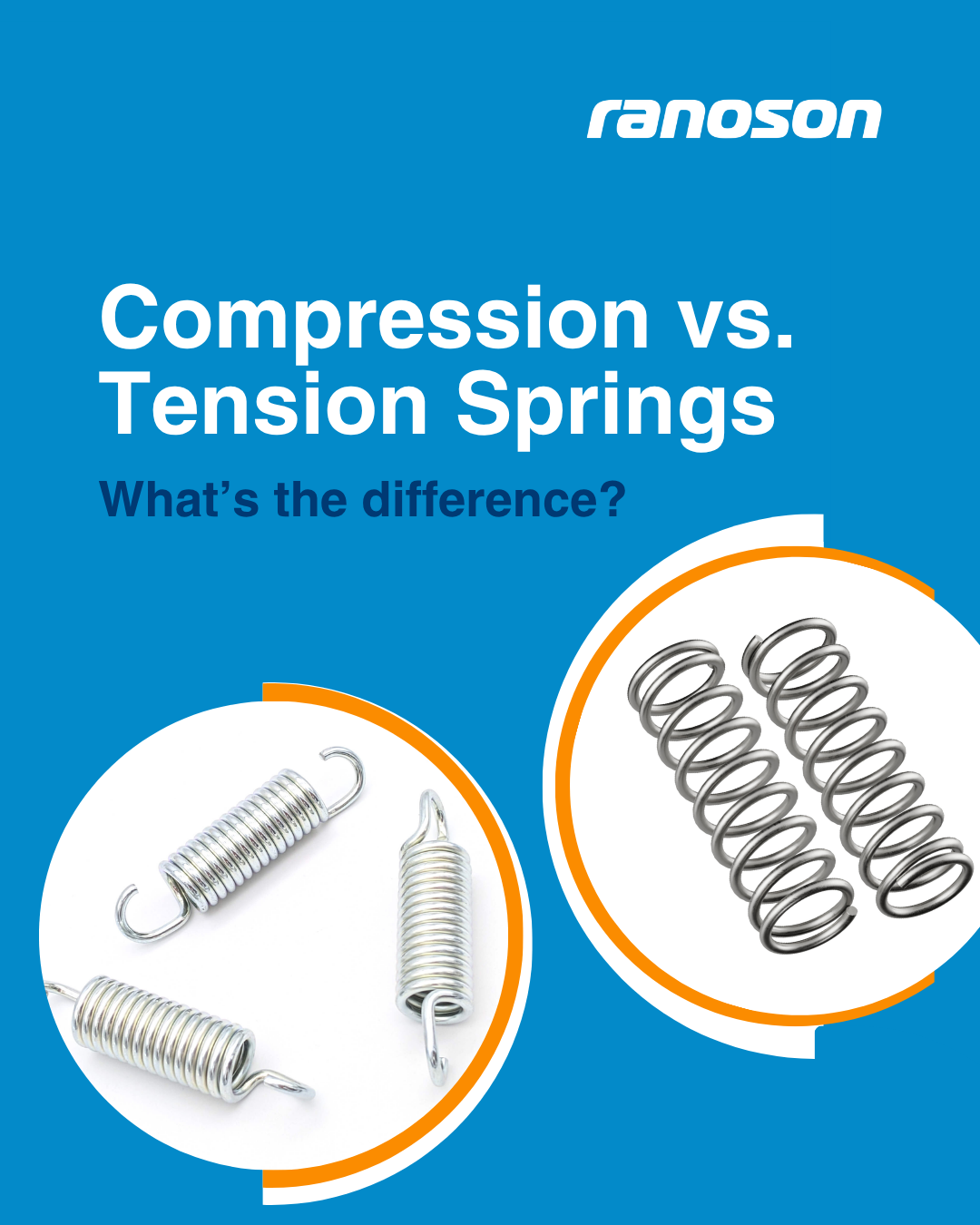
Understanding Compression vs. Tension Springs
Posted on: 20 Jun, 2025
Springs are at the heart of countless mechanical systems, from industrial machinery to everyday appliances. Yet not all springs are created equal. The two most common types used across industries are compression springs and tension springs—each designed for very different mechanical functions.
At Ranoson, we specialize in manufacturing both types, helping OEMs and Tier 1 suppliers get the right spring for the right job. Here’s your comprehensive guide to understanding the differences between compression and tension springs, and how to choose the best one for your application.
What Are Compression Springs?
Compression springs are open-coil helical springs designed to resist compressive forces. When you apply force to compress the spring, it pushes back to return to its original shape. They are the most commonly used spring type in industrial settings.
➔ Applications:
- Automotive suspensions
- Valves and pumps
- Electronic devices (push buttons)
- Machinery components
- Appliances
➔ Benefits:
✔ Simple design
✔ High load-bearing capacity
✔ Suitable for high-cycle applications
What Are Tension Springs?
Tension springs, also called extension springs, work in the opposite way. These springs are tightly wound and designed to absorb and store energy when pulled apart. When the pulling force is released, the spring returns to its original coiled position.
➔ Applications:
- Garage doors
- Trampolines
- Washing machine doors
- Agricultural machinery
- Power tools
➔ Benefits:
✔ Provides return force when stretched
✔ Hooks or loops at both ends for easy installation
✔ Useful for holding components together under tension
Key Differences at a Glance
| Feature | Compression Springs | Tension Springs |
|---|---|---|
| Force Direction | Compressed (push) | Extended (pull) |
| Shape | Open-coil | Tightly wound |
| Use Case | Supports weight, absorbs shock | Pull components together |
| End Features | Open or ground ends | Hooks, eyes, or custom ends |
| Common Materials | Carbon steel, stainless steel | Carbon steel, stainless steel |
Choosing the Right Type for Your Application
Selecting between compression and tension springs depends on three key factors:
- Function of the Mechanism – Does your component need to resist compression or provide return force under tension?
- Operating Conditions – Consider environmental factors such as temperature, moisture, and exposure to corrosive elements.
- Custom Requirements – Customizations like special hooks on tension springs or closed/ground ends on compression springs might be required for performance optimization.
Why Choose Ranoson?
As a trusted custom spring manufacturer in India, Ranoson ensures that every spring we produce is tailored for the application’s unique demands.
✔ Expertise in both compression springs and tension springs
✔ Customization based on mechanical and environmental needs
✔ Stringent quality checks for strength, fatigue resistance, and dimensional accuracy
✔ ISO 9001:2015 certified manufacturing processes
Let’s Build Better—Together
Choosing the right type of spring is not just about mechanics—it’s about performance, efficiency, and long-term cost savings. Let us help you accelerate your growth with springs that last.
📧 sales@ranoson.co.in
📞 +91 7895010088 | +91 7217013190
🌐 www.ranoson.co.in
